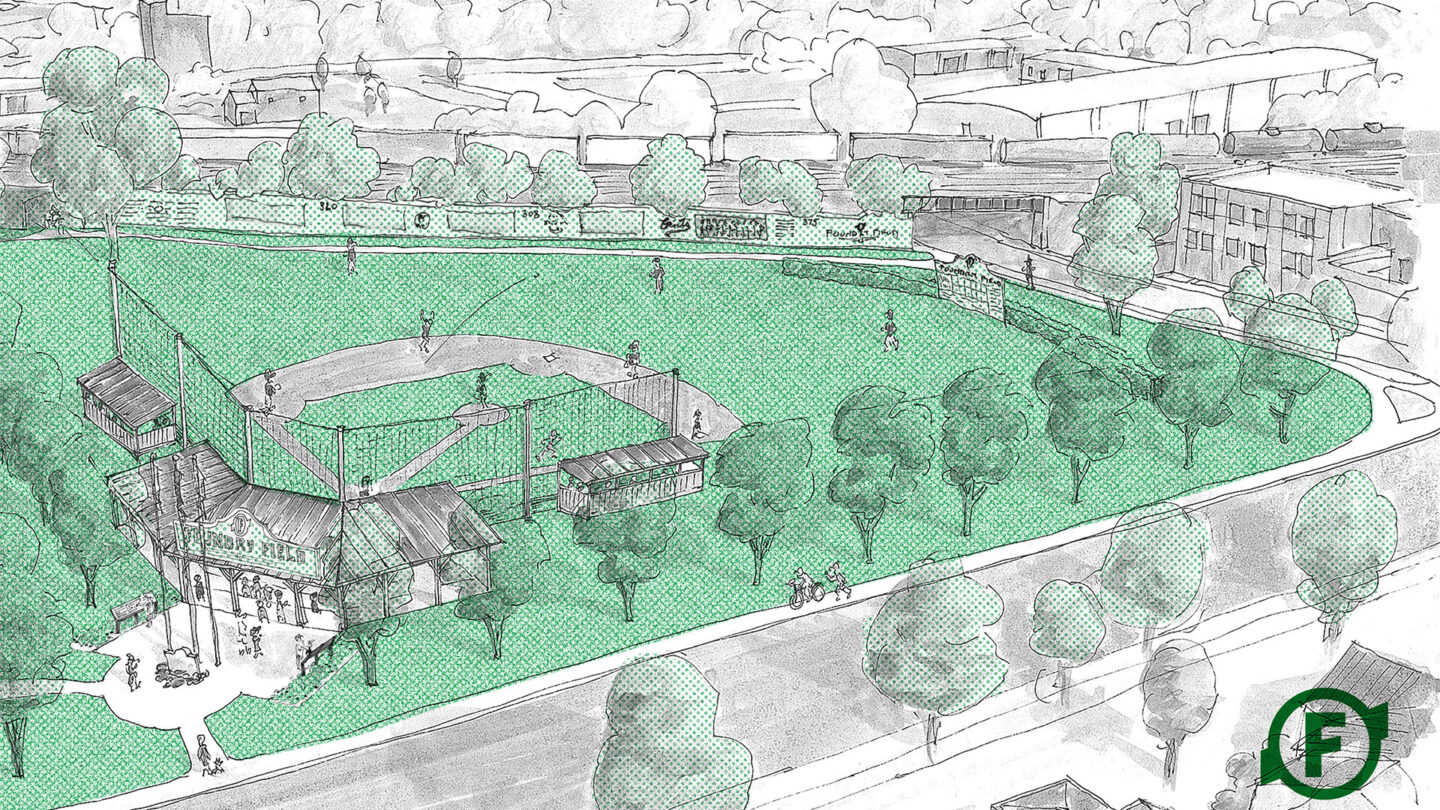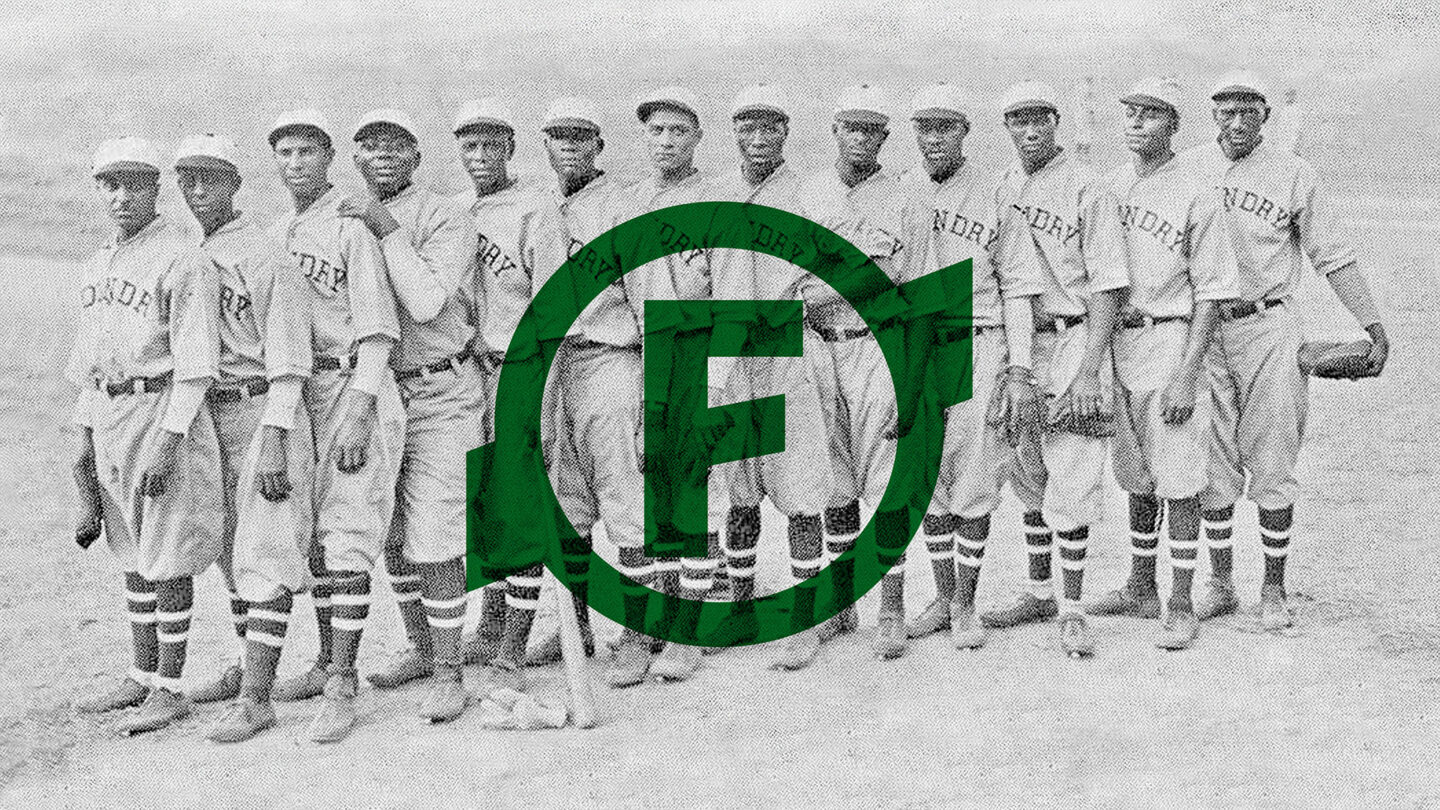Foundry Field: The Story of Race, Representation, Access, and Baseball in South Bend Indiana
Foundry Field is a public/private partnership that is working to build a publicly accessible baseball field in the urban core of South Bend, Indiana. The project would create an intergenerational space for the revival of baseball within our inner-city, where access to baseball is limited. The project will also highlight a rich history of minority baseball teams, whose players have played important roles in the leadership and growth of our community. The field will be named after the 1920s era Foundry Giants, who played against white teams 25 years before the integration of professional baseball. Murals dedicated to the Giants and other teams will help spark dialogue and awareness of our city’s conflicted history with race and representation.
Agency
Clinton Carlson Design, University of Notre Dame
Practice Area
Client
Foundry Field, Sappy Moffitt Field Foundation
Industry


A vintage rendering of Foundry Field.

The only known image of the Foundry Giants in uniform. The Foundry Field “stamp” imprinted over top of the Giants.
Project Overview
The challenge for this project was to tell the story of Foundry Field before it was built. We needed to raise $150k for the initial field construction and will need an additional $500k in funding to bring the whole vision to life. Helping potential partners and donors envision the field and a visiting artist program became the top priority in the design of the website, branding, and informational materials. This was done with an all-volunteer committee and minimal budget for materials and design.
The vision of Foundry Field was brought to life through field renderings that referenced 20th-century baseball fields, a vintage inspired brand system and storytelling that began to bring the Foundry Giants and our historical community back to life. The brand identity was inspired by a single photo of the Foundry Giants in uniform and historical references to the Studebaker plant where the players worked. This included a foundry stamp on every forged auto part from Studebaker—which became the basis for the banner “F” stamp used at the logotype throughout the identity system. The Foundry Giant’s uniform typography and historical type from newspapers and the 1923 American Type Founders Specimen book informed two custom typefaces with two additional weights utilized by the brand system. Website design (foundryfield.org) incorporated information design and a trailer video to help connect the physical field to historically underrepresented teams and our communities current and past issues with race, representation, and access.
A crowdsourced campaign received nearly 200 contributors and raised $100k. Additional grants from the Indiana Housing and Community Development Authority and the University of Notre Dame’s Centers for Social Concerns have set the stage for construction and community arts programming to begin in the spring of 2023. The campaign gained regional media attention and the support of the mayor’s office. An all-volunteer team with little history or portfolio of public projects brought together community partners from throughout our city to tell the story of a better future that would not neglect our forgotten and too-often marginalized history. Foundry Field will become a place for play, a place for story, and a place for community. But first, we had to make it feel real.

A detail of the hand-operated scoreboard with mural wall in the background.

Images of the Studebaker factory, foundry workers, and newspaper clippings that tell the story of the Foundry Giants.

Detail of the envisioned public pavilion with historical marker.

Custom typefaces designed with historical references on the right.

A few portions of the Foundry Field website (foundryfield.org)
Project Details
Design Team
Clinton Carlson (direction, writing, graphics, research), Matthew Insley, Michael Hebbeler, Sean Kennedy (direction, writing), Kevin Buccellato (architect), Katie Walden, Greg Bond (research), Ben Kruis (direction, production)
Photo Credits
Studebaker National Archives; Rene Francisco Garza, Sr. Photo and Papers, Civil Rights Heritage Center, Indiana University—South Bend; The History Museum; Pokagon Band of Potawatomi (photography)
Open Date
May 2023




